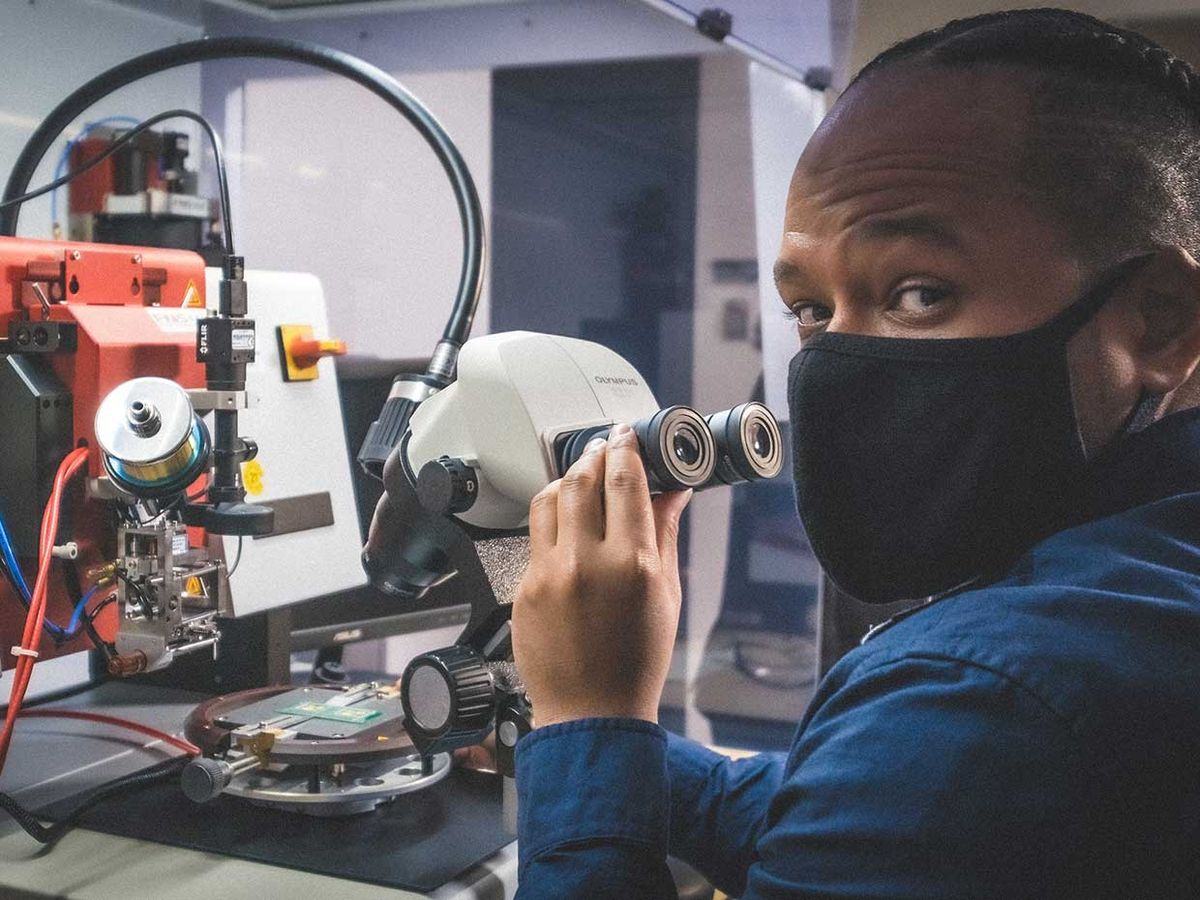THE INSTITUTE Many technologies—including the Internet, television, and medical equipment—depend on the use of photonics, but there is a shortage of trained technicians who can build, install, and maintain equipment in the field. Photonics is the science and technology of generating, controlling, and detecting particles of light.
In Massachusetts alone, more than 50,000 photonics jobs are going unfilled, according to the “Takeaway” podcast, which reported on the shortage.
To help rectify the situation, IEEE, the Optical Society, and SPIE— the International Society for Optics and Photonics— each donated US $75,000 to pay the tuition of the first 15 students who participate in the Advanced Manufacturing and Integrated Photonics Certificate program.
The 15-month program, which was launched this year, prepares students who have little to no background in science, technology, engineering, or math for a career in the field.
The program was developed by Bridgewater State University, in Massachusetts, and nearby Stonehill College, in collaboration with MIT’s Initiative for Knowledge and Innovation in Manufacturing. The initiative helps create education and training programs, supports research efforts in manufacturing, and helps develop national policy in the field of photonics.
“As technology advances and the resulting applications become mainstream, the demand for technicians grows,” says Douglas M. Razzano, executive director of the IEEE Photonics Society. “These technological advances will continue to create many jobs that require certified technicians.
“This pilot program is the first step in both supporting this level of training and spreading awareness of the obtainable job opportunities available to all in the photonics industry.”
HOW IT CAME TOGETHER
Bridgewater State has run optics-related research programs for 20 years. Stonehill introduced a photonics major and minor this year. Bridgewater already offers undergraduate courses on photonics—which next year will become part of a new accredited photonics and optical engineering degree program, according to a MIT Newsarticle.
To receive the certification, students must complete 27 credits—the equivalent of nine undergraduate courses—and work as an apprentice for three months in their final semester. They also participate in two day-long boot camps held at MIT.
The courses cover topics such as fiber optics, digital fundamentals, and photonic integrated circuits.
“The program offers hands-on experience and know-how in everything you will need to gain in well-paid positions in the fast-growing photon and light-based economy,” Bridgewater physics professor Ed Deveney told MIT News. “We hope to grow this new program each year, and help other schools offer similar opportunities to their students.”

ADDITIONAL AID
In addition to financial support from the three societies, the program has received a grant of $1.8 million from the U.S. Office of Naval Research. It also received $4 million from the Massachusetts Manufacturing Innovation Initiative, which supports education and projects working to advance manufacturing.
Thanks to the funding, the program was able to build a photonics lab at Stonehill so that students can work with machinery used by technicians, such as a femtosecond laser, according to the program’s website.
MIT also played a critical role in developing the certification program. The school leads the Aim Academy, an education and workforce development initiative by manufacturing institute Aim Photonics. Several faculty members of the academy and MIT have joined the Bridgewater faculty to teach courses in the technician training program.
“I really enjoy the hands-on experience,” student Kenneth Cardoso told The Institute. “I find it interesting, and I just want to learn more.”
Cardoso, who previously worked as a truck driver, says he discovered a passion for manufacturing and computer programming through his classes.
“I’m excited to [take more] courses to see what else I like,” he says. “I never knew about [photonics and manufacturing] until I started this program. Now I found a career that suits me and I enjoy.
“You can’t be afraid to pursue a different career path.”
IEEE membership offers a wide range of benefits and opportunities for those who share a common interest in technology. If you are not already a member, consider joining IEEE and becoming part of a worldwide network of more than 400,000 students and professionals.
Joanna Goodrich is the associate editor of The Institute, covering the work and accomplishments of IEEE members and IEEE and technology-related events. She has a master's degree in health communications from Rutgers University, in New Brunswick, N.J.



